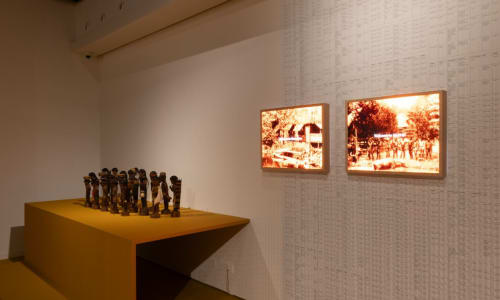Exhibition on display until Nov. 10th.
It is now difficult to imagine, and even produces embarrassment and indignation but at the end of the 19th Century and into the 20th century, human zoos proliferated in Europe. Spain joined the trend of ethnic exhibitions in 1987, with the General Exhibition of the Philippines, which turned the Retiro’s Park into a village of indigenous people from the Spanish colony (1556-1898). A year later, as part of the 1888 Universal Exposition of Barcelona, the Pavilion of the General Tobacco Company of the Philippines, founded by Antonio López, once again exhibited human beings alongside a series of artifacts that eventually became part of the collection of the Museu de les Cultures del Món.
Digging through its storage, the artist Domènec found a series of figurines that were initially catalogued as ritual objects but were later discovered to have been commissioned by te organizers as souvenirs to show to Spanish public what the inhabitants of the colony were like. A setoff those figurines, invented for exoticizing purposes, is now on display at the Museu Etnològic i de Cultures del Món as part of Reencarnamientos. This is a bold and pertinent exhibition in which 10 artists give new life to some of the etnological preserved by the museum reinterpreting them and offering critical readings which connect with the present.
To read more click on the link below..


